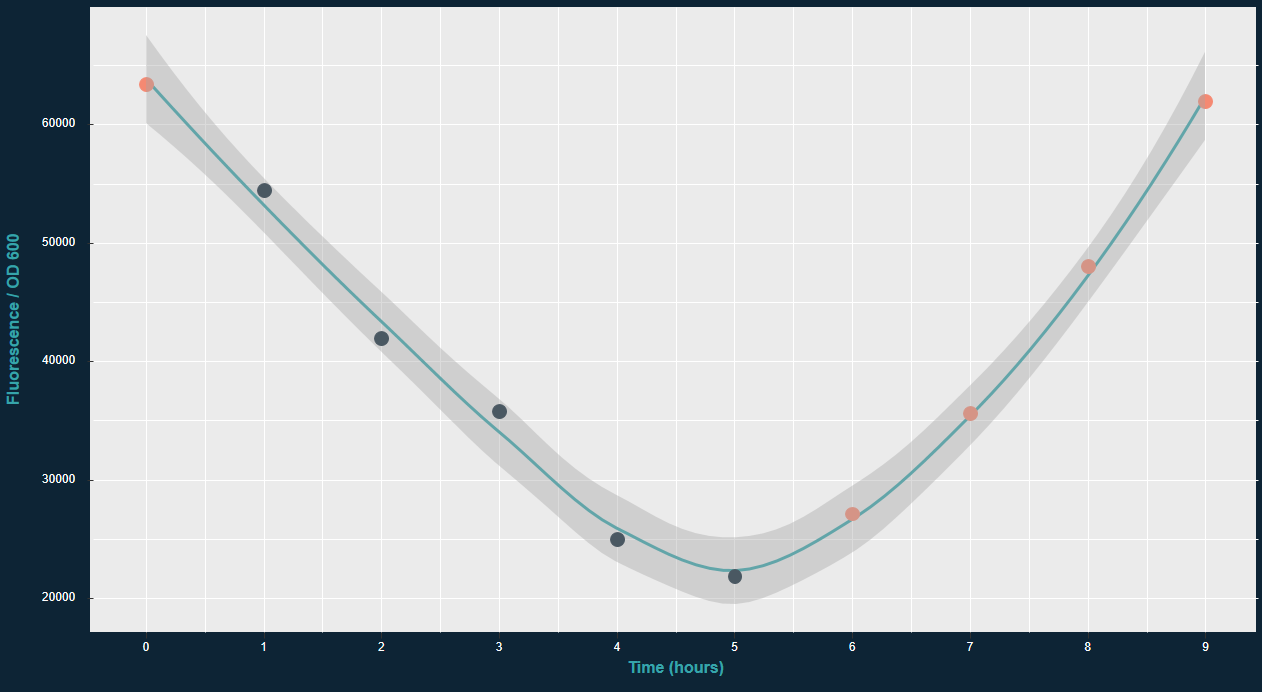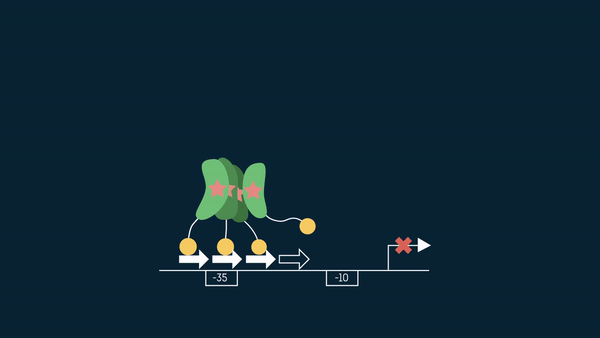Part:BBa_K3032076
Ready to use mRFP1-CarH device (strong)
Contents
Introduction
The CarH system
This is a ready to use device based on the combination of BBa_K3032070 and BBa_K3032073 parts, where BBa_K3032070 part is a mRFP1 reporter under a light-inducible CarH promoter and a strong RBS (BBa_B0034) and BBa_K3032073 part is a CarH repressor under a weak Anderson promoter (BBa_J23114) and strong RBS (BBa_B0034).
CarH protein from Thermus thermophilus incorporates cobalamine (Vitamin B12), which has a photosensitive Co-C bond, as a prosthetic group. In the dark, CarH is a tetramer that binds strongly to DNA and represses protein translation [1]. When excited by green light, the photosensitive Co-C bond breaks [2], this disrupts the tetramer structure, and then gene expression can start.
Results
Experimental procedure
For our experimental procedure, we constructed a plasmid carrying a CarH cassette under a constitutive Anderson promoter (Part:BBa_J23114), and an RFP cassette under the CarH inducible promoter of our design. The experiment was conducted with 20 μM cyanocobalamin, the cells were grown in 30 degrees celsius overnight. With CarH gene under a weak promoter, we were able to observe a 45 fold difference between bacteria grown in light and in the dark

System Responsiveness
An experiment was designed to see, if the CarH sysem is modular (protocol). An overnight culture (without cobalamin) was diluted with liquid LB media (containing 10 μM cobalamin), thus allowing the CarH protein to repress in the dark state. The bacteria were kept varying amounts on time in the dark and later brought to light and we were able to observe a change in fluorescence divided by OD 600. The bacteria were grown in 30°C.

Full experimental protocol can be found here
References
- ↑ Padmanabhan S, Pérez-Castaño R, Elías-Arnanz M. B12-based photoreceptors: from structure and function to applications in optogenetics and synthetic biology. Current Opinion in Structural Biology. 2019;57:47-55. doi:10.1016/j.sbi.2019.01.020
- ↑ Chatelle C, Ochoa-Fernandez R, Engesser R, et al. A Green-Light-Responsive System for the Control of Transgene Expression in Mammalian and Plant Cells. ACS Synth Biol. 2018;7(5):1349-1358. doi:10.1021/acssynbio.7b00450
Sequence and Features
- 10COMPATIBLE WITH RFC[10]
- 12INCOMPATIBLE WITH RFC[12]Illegal NheI site found at 7
Illegal NheI site found at 30 - 21COMPATIBLE WITH RFC[21]
- 23COMPATIBLE WITH RFC[23]
- 25INCOMPATIBLE WITH RFC[25]Illegal AgeI site found at 1712
Illegal AgeI site found at 1824 - 1000COMPATIBLE WITH RFC[1000]
| None |



